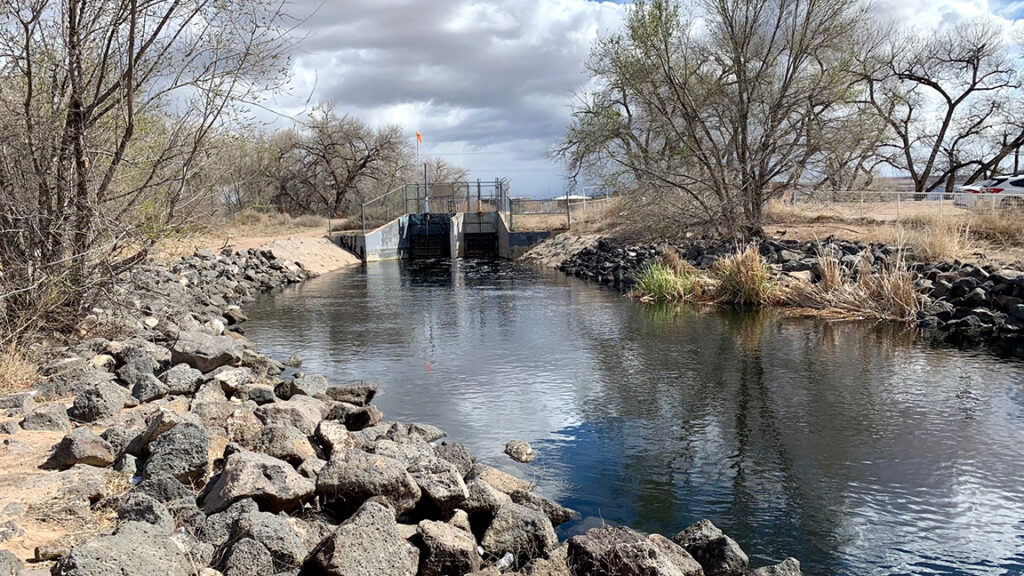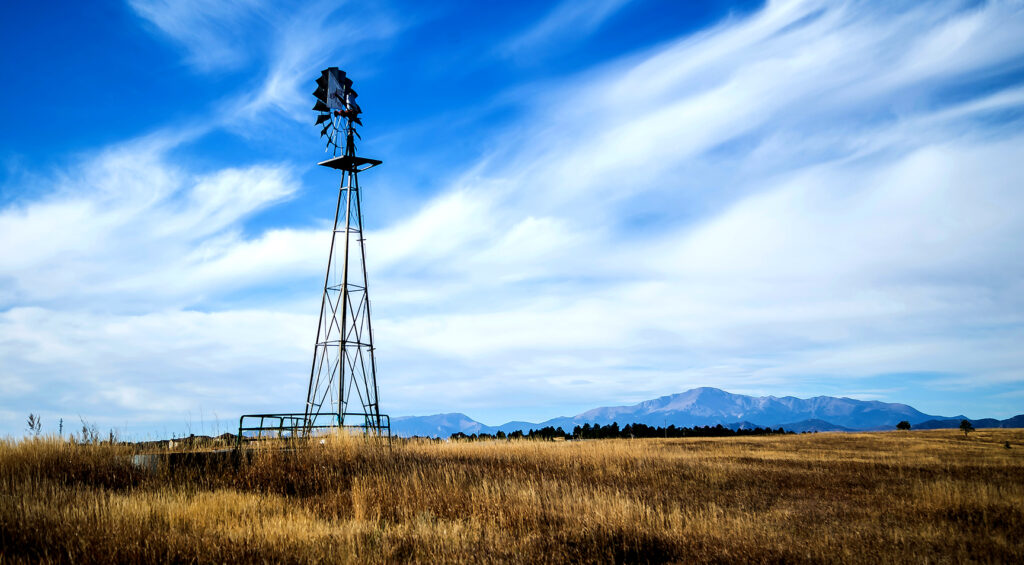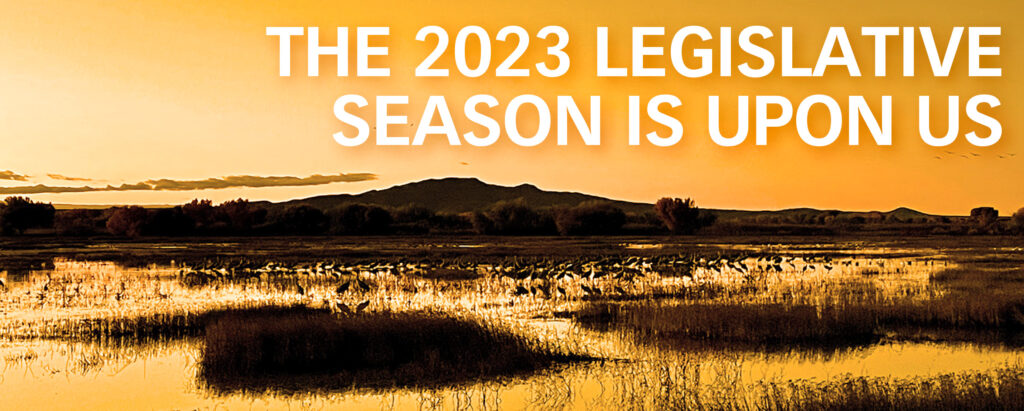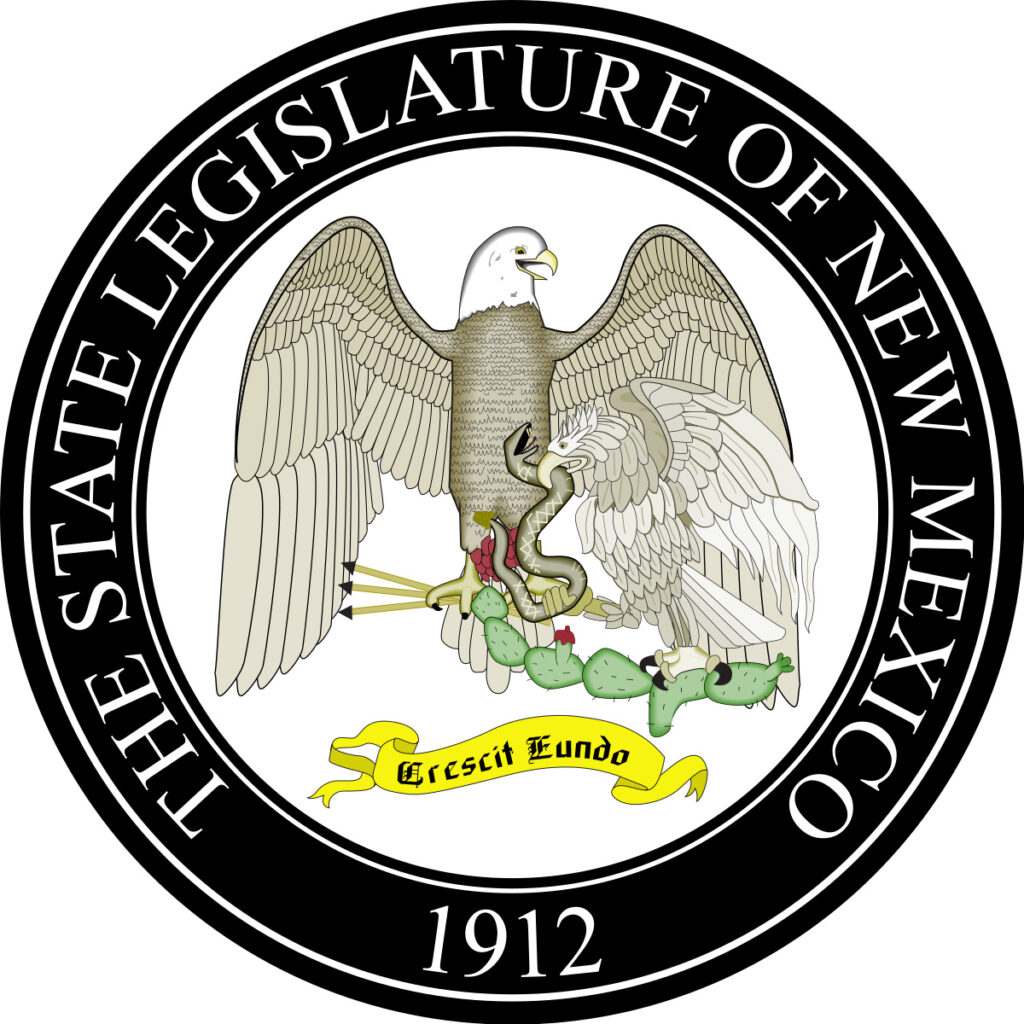by Edna Loehman, with information from David Morris, Public Affairs Manager, ABCWUA
The Albuquerque Bernalillo County Water Utility Authority (ABCWUA) manages water for Albuquerque and the surrounding Bernalillo County area. It provides water to about 650,000 municipal customers; total per capita daily usage including commercial and industrial applications is about 125 gallon per day. Until 2008, the drinking water supply was solely from the aquifer beneath Albuquerque. Water table levels were dropping – pumping levels were twice as high as natural replenishment and the aquifer was smaller than originally believed. In response, the Water Authority (created by the Legislature from the City of Albuquerque’s Public Works Department to serve both Albuquerque and Bernalillo County) moved to add surface water to the community’s supply portfolio.
The San Juan-Chama Drinking Water Project, completed by the Water Authority in 2008, tapped into water from the federal San Juan-Chama Project. which started to bring an annual allotment of 110,000 acre-feet of surface water into New Mexico from the Colorado Basin in the early 1970s. This immense project delivers water through a tunnel and pipes into the Chama River. The Water Authority receives about half of the supply and the rest goes to the Middle Rio Grande Conservancy District, the Jicarilla Apache Nation, and the City/County of Santa Fe. Consequently, our water supply is now about 70% surface water and 30% groundwater. (In drought years, though, this proportion may shift to more groundwater.) Use of San Juan-Chama water has resulted in significant improvement of groundwater levels; in some areas the levels have risen by 50 feet or more. Another advantage of surface water use is that it does not have to be treated for arsenic, which is a problem when using groundwater. Total cost of the San Juan-Chama Drinking Water project, including a state-of-art surface water treatment plant, was $500 million.
Annual potable water production is about 34.2 billion gallons; of this, the total wastewater discharge to the Rio Grande is about 17.5 billion gallons. Thus, about half the potable water supply is consumptive use for irrigation of gardens and landscaping. To carry wastewater from homes and businesses, the Water Authority maintains a system of about 2,400 miles of sewer line from homes to the Southside Water Reclamation Plant where treated water then is released into the Rio Grande. Wastewater treatment must meet standards for water quality set by the EPA. The treatment plant is rated for a maximum capacity of 76 million gallons per day (mgd) and currently treats 50–60 mgd. The outflow of the plant has been called “the largest tributary in New Mexico’s middle Rio Grande”!

The Southside Water Reclamation Plant is located adjacent to the Rio Grande in the South Valley, about a mile south of Rio Bravo Boulevard. Raw sewage enters the plant and is subjected to a multi-step treatment process to remove solids and contaminants. The final step in the process is disinfection using ultraviolent light. The clean water is then returned to the environment via the outfall to the Rio Grande. Leftover sludge from the treatment process is transported to our Soil Amendment Facility for conversion to high-quality compost, which is available for sale to the public.
Because of the strains of increasing population growth and climate change, the Water Authority has been making contingency plans to manage groundwater sustainably. Water 2120: Securing our Water Future is a very large report that details how this can be accomplished. Three key aspects are conservation programs, aquifer recharge, and the reuse of wastewater.
Conservation programs provide incentives to homeowners to remove lawns and install xeriscape planting. Toilet and shower rebates are no longer necessary because most of these have already been replaced by low flow appliances. The result is that per capita use was cut in half from 1995 to 2015.
The possibility of aquifer recharge is being demonstrated at Bear Canyon Arroyo under a State Engineer permit; it applies unused surface water in the arroyo in the winter months. It is the first operating recharge project in New Mexico and serves as a groundbreaking example. The project’s success is due to its geology; the infiltration site is permeable because it overlies the site of the Rio Grande before the river shifted to the west.
Reuse of wastewater is a major emphasis for reducing water use. Klarissa Pena, Albuquerque City Councilor and former Chair of the Water Authority’s Governing Board, has stated that water reused is water saved. “Current and planned reuse projects are for landscapes, parks, golf courses, and open spaces. Using non-potable recycled water in places like this allows us to conserve drinking water for its most important purpose: drinking.”
I asked David Morris, Public Relations Manager for ABCWUA, what in his opinion citizens in our area should be aware of and have support for in terms of managing our water supply: “Our hope is that local residents will continue to realize and act on the need for water conservation, especially when it comes to outdoor irrigation. Try to limit watering to three days a week in the summertime; follow time-of-day watering rules (no sprinkler irrigation between 11 a.m. and 7 p.m. from April 1-Oct. 31); maintain sprinkler systems and check regularly for leaks and malfunctions; and wherever possible replace decorative turf with desert-friendly xeriscaping. We also appreciate residents’ support for investment in infrastructure intended to ensure our future water supply, such as satellite treatment plants and transmission pipelines for water reuse.”
Overall, ABCWUA has been working towards a sustainable potable water supply for the Albuquerque metro area: per capita water use was halved between 1995 and 2015, and groundwater pumping has had a two-thirds reduction in that time period. The water utility is undertaking groundbreaking efforts in water reuse and groundwater recharge.








